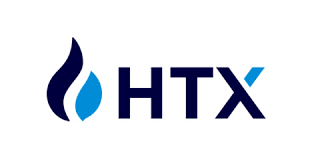
This post may contain affiliate links, which means I may receive a small commission, at no cost to you, if you make a purchase through a link
CORE coin and other blockchains are made expressly to solve this issue. In Core’s case, it makes use of both the revised Proof of Stake method known as delegates Proof of Stake and the traditional Proof of Work agreement process found in the Bitcoin blockchain. Core is an innovative blockchain that combines the benefits of a granted proof of asset consensus mechanism with the network’s proof of work capabilities from Bitcoin to create a network that is simultaneously scalable, safe, and decentralized.
How is CORE operated?
The Core network is a blockchain that uses Satoshi Plus, a consensus process, to optimize security, scalability, and decentralization. As its name suggests, Satoshi Plus makes use of the advantages provided by the Bitcoin network’s proof-of-work (PoW) architecture while also *plusing* the authority provided by the more recent, larger-scale DPoS for system for network consensus. Additionally, this blockchain is “Turing-complete,” which means that it may resolve any computational issue given enough time. This essentially allows developers to create more intricate apps. The final outcome? an improved environment. Speaking about ecosystems, the network can execute Ethereum dApps and smart contracts since it is compatible with the Ethereum Virtual Machine (EVM). This makes it easier for developers to create and port their builds.
In all of this, it’s equally crucial that Core ignores the flaws in those methods. In other words, because of PoW’s poor scaling, it is extremely difficult for developers to create apps that go beyond Bitcoin’s use as a store of value; instead, they are desperately seeking to create sophisticated Web3 applications. Additionally, Satoshi Plus seeks to eliminate the tendency for Evidence of Stake (PoS) networks—like Ethereum—to become increasingly centralized. A proof of stake (PoS) design ought to facilitate greater decentralization in theory, but in reality, the CeFi typically holds a sizable portion of the voting power on any given network.
Who Are CORE’s Founders?
The verified CORE coin accounts describe CoreDAO as an international group of contributors who are passionate about improving web 3.0 and have a shared vision. They use blockchain technology to help the Satoshi Plus environment expand. The project has a large following on Twitter (approximately 1.6 million) and Telegram (about 74,000), but the identity of the developers, creators, and donors are still hidden from the public.
What is the total number of CORE coins in circulation?
The CORE network’s utility and governance token, has a 2.1 billion coin maximum supply. It operates in accordance with Bitcoin’s hard cap and the scarcity theory of value. A burn mechanism similar to Ethereum’s will be implemented by the developers, in which will decide how much of the rewards and fees are burned.Six categories receive the entire supply of CORE: node mining (39.995%); contributors (15.029%); reserves (10%); relay incentives (0.476%); and the Treasury (9.5%).
Forecast for Core Price
CORE’s 2023 has been quite eventful. We have separated the most recent price prediction into two categories: short-term and long-term. This helps to make the prediction easier to understand. At the time of writing, trading volume was 687,627,310. Core has increased within the last 30 days by 331.68%. In the near term, our study of the Core forecast for June 2024 indicates that the median cost will be 4.42, with a potential high of $4.73.
In addition, our long-term research indicates that the average Core cost for October 2024 will be 5.45, with a potential high price of $5.83 following.

Join us to get 5672 USDT and 50% off trading fees